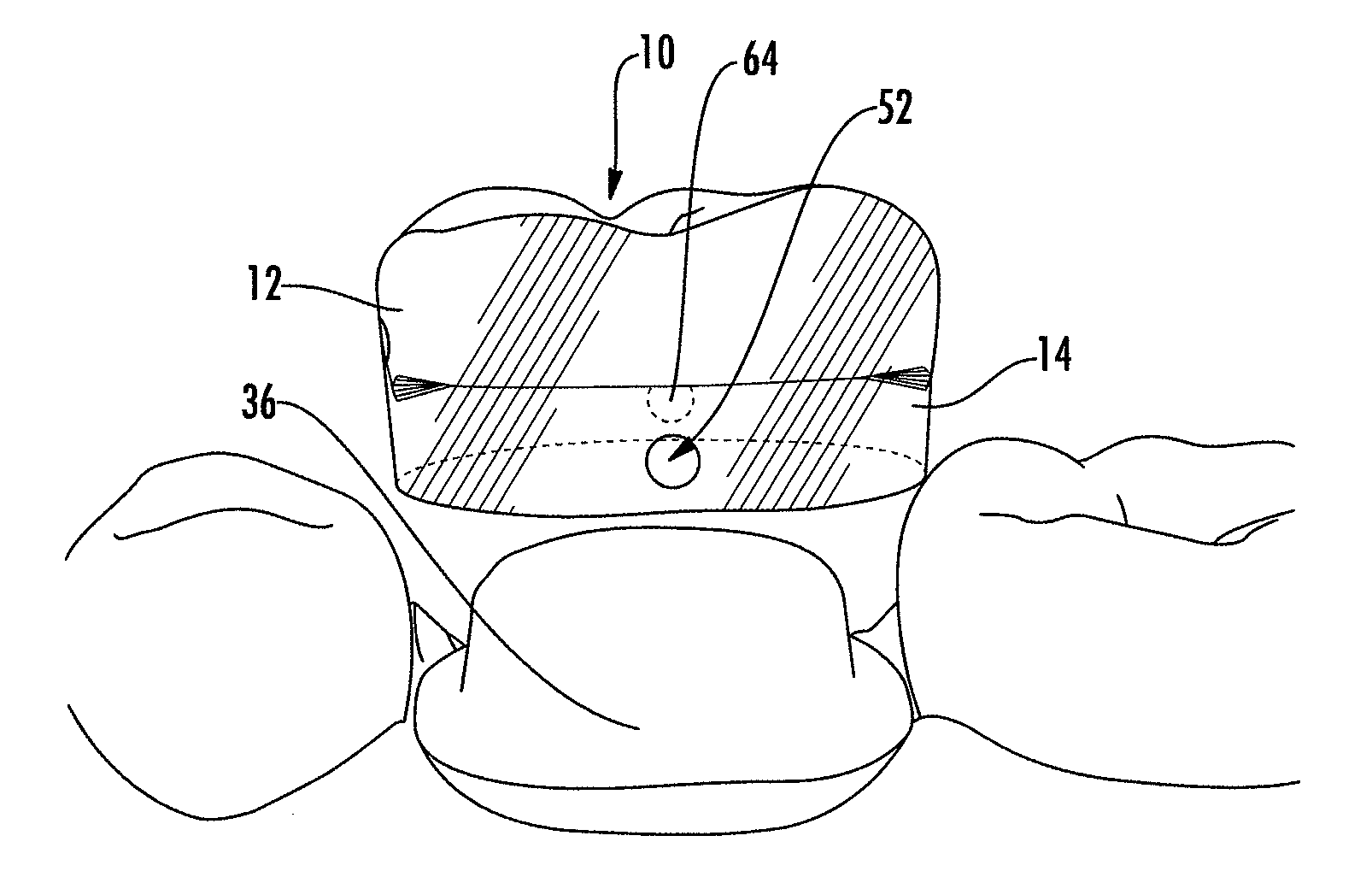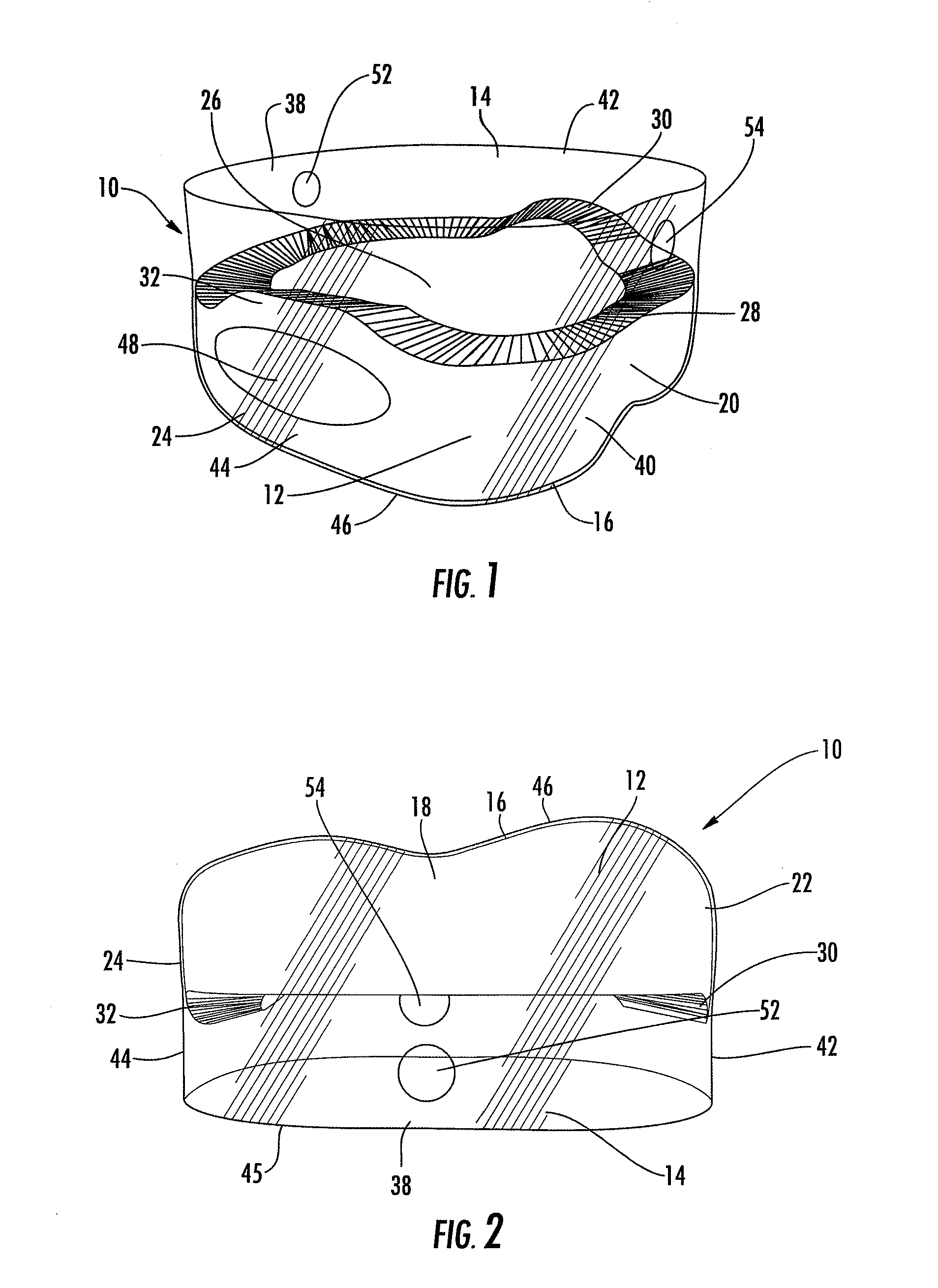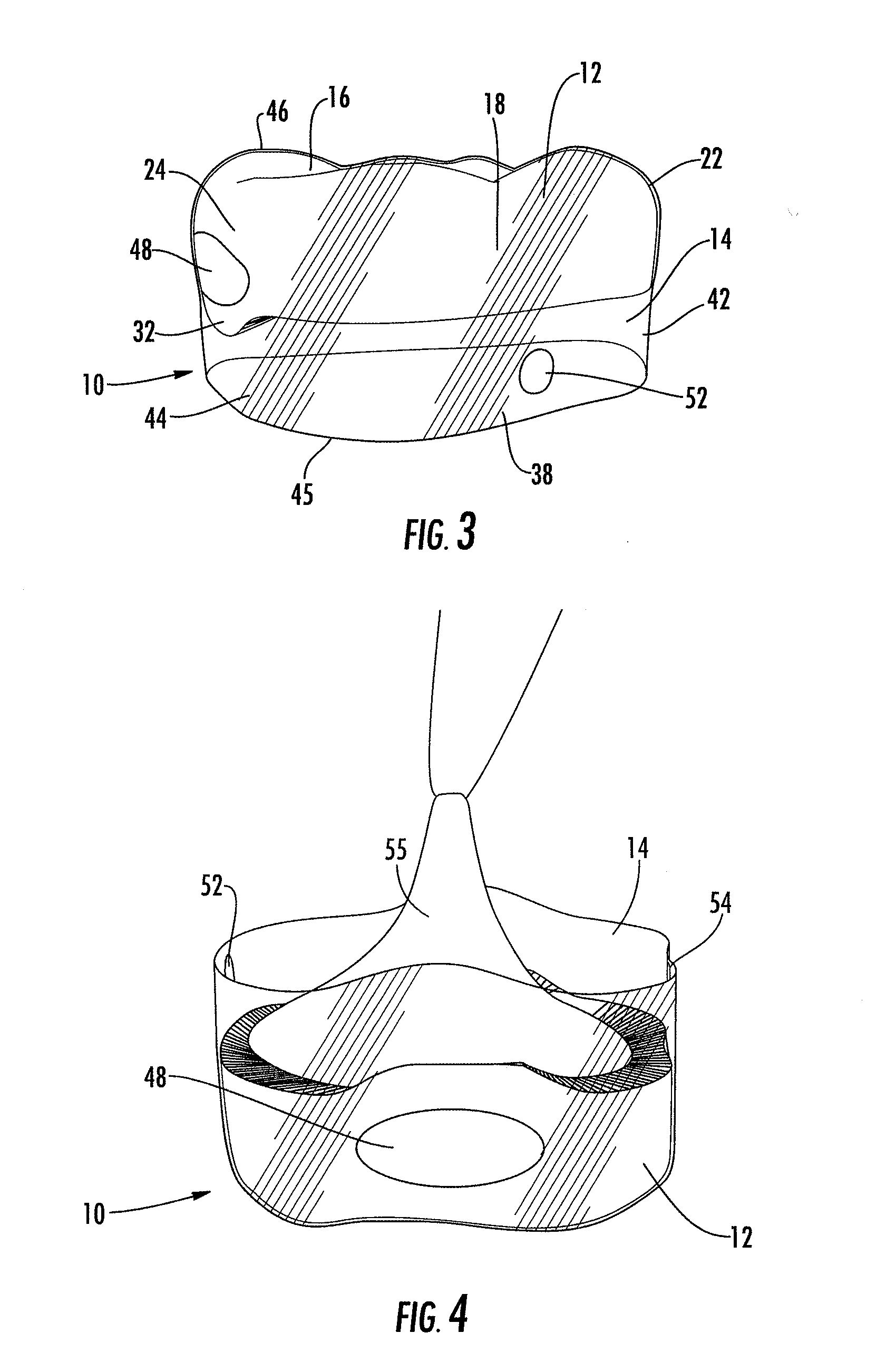Universal dental crown and system and method of restoring a tooth using a universal dental crown
- Summary
- Abstract
- Description
- Claims
- Application Information
AI Technical Summary
Benefits of technology
Problems solved by technology
Method used
Image
Examples
first embodiment
As shown in the attached figures, a dental crown 10 in accordance with the present invention comprises two primary components to form a single device. Referring specifically to the present invention shown in FIGS. 1-3, the dental crown 10 comprises a crown shell12 that is the inner component and a crown matrix 14 that is the outer component. The crown shell 12 is a universal component that is manufactured in a range of shades, tooth-types and sizes. The crown shell 12 is preferably composed of universal ceramic, metal, plastic or resin material formed using conventional means for working with these materials, such as plastic injection molding, pressing molten glass or injecting ceramic powders into molds and then consolidating the powders in a furnace. The crown shell 12 generally includes an occlusal surface 16 and side surfaces consisting of a buccal surface 18, lingual surface 20, distal surface 22, and mesial surface 24. FIG. 1 also shows an internal cavity 26 configured to rece...
second embodiment
FIGS. 7-9 show the present invention where the crown matrix 14 includes a hinged portion 56 enabling the occlusal surface 46 and portions of the buccal 38a, lingual 40a, distal 42a and mesial 44a surface to rotate about the hinged portion 56 exposing the internal cavity of the crown matrix 50. Whereas the sidewalls of the crown matrix 14 taper towards the gingival margin 45, rotating the crown matrix 14 about the hinged portion 56 into an open position will facilitate removal of the crown shell 12 from the crown matrix 14. Numbering used in identifying elements of the previously described preferred embodiments will be used to describe this preferred embodiment as well.
The buccal 38, lingual 40, distal 42 and mesial 44 surfaces of the crown matrix 14 are divided into upper and lower portions 38a,b, 40a,b, 42a,b, and 44a,b at margin 58. The margin 58 is a cut or separation that extends substantially around the circumference of the of the crown matrix 14, with the hinged portion 56 lef...
third embodiment
In the present invention shown in FIGS. 10-11, the crown matrix 14 includes a partial buccal 38, lingual 40, distal 42 and mesial 44 sidewall defining the internal cavity of the crown matrix 50 into which the crown shell 12 seats. The occlusal portion present in preferred embodiments discussed above is not present in this embodiment and is replaced by a first and second strap member 72, 74 that extends over the occlusal surface 16 of the crown shell 12. Whereas the sidewalls of the crown matrix 14 taper towards the gingival margin 45, limiting the height of the sidewalls to the margin 58 will facilitate removal of the crown shell 12 from the crown matrix 14 at the aperture defined by margin 58.
A first and second locking portion 60a, 60b are disposed at the ends of the straps 72, 74 and corresponding receptacles 62a, 62b are disposed on the buccal sidewall. In this preferred embodiment, the locking portions 60a, 60b are releasable, bobble-type cable ties. However, any suitable lockin...
PUM
 Login to view more
Login to view more Abstract
Description
Claims
Application Information
 Login to view more
Login to view more - R&D Engineer
- R&D Manager
- IP Professional
- Industry Leading Data Capabilities
- Powerful AI technology
- Patent DNA Extraction
Browse by: Latest US Patents, China's latest patents, Technical Efficacy Thesaurus, Application Domain, Technology Topic.
© 2024 PatSnap. All rights reserved.Legal|Privacy policy|Modern Slavery Act Transparency Statement|Sitemap



